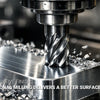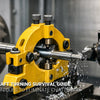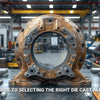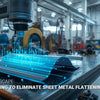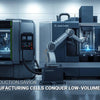How Can Quick Change Systems Cut Die Casting Downtime from Hours to Minutes?
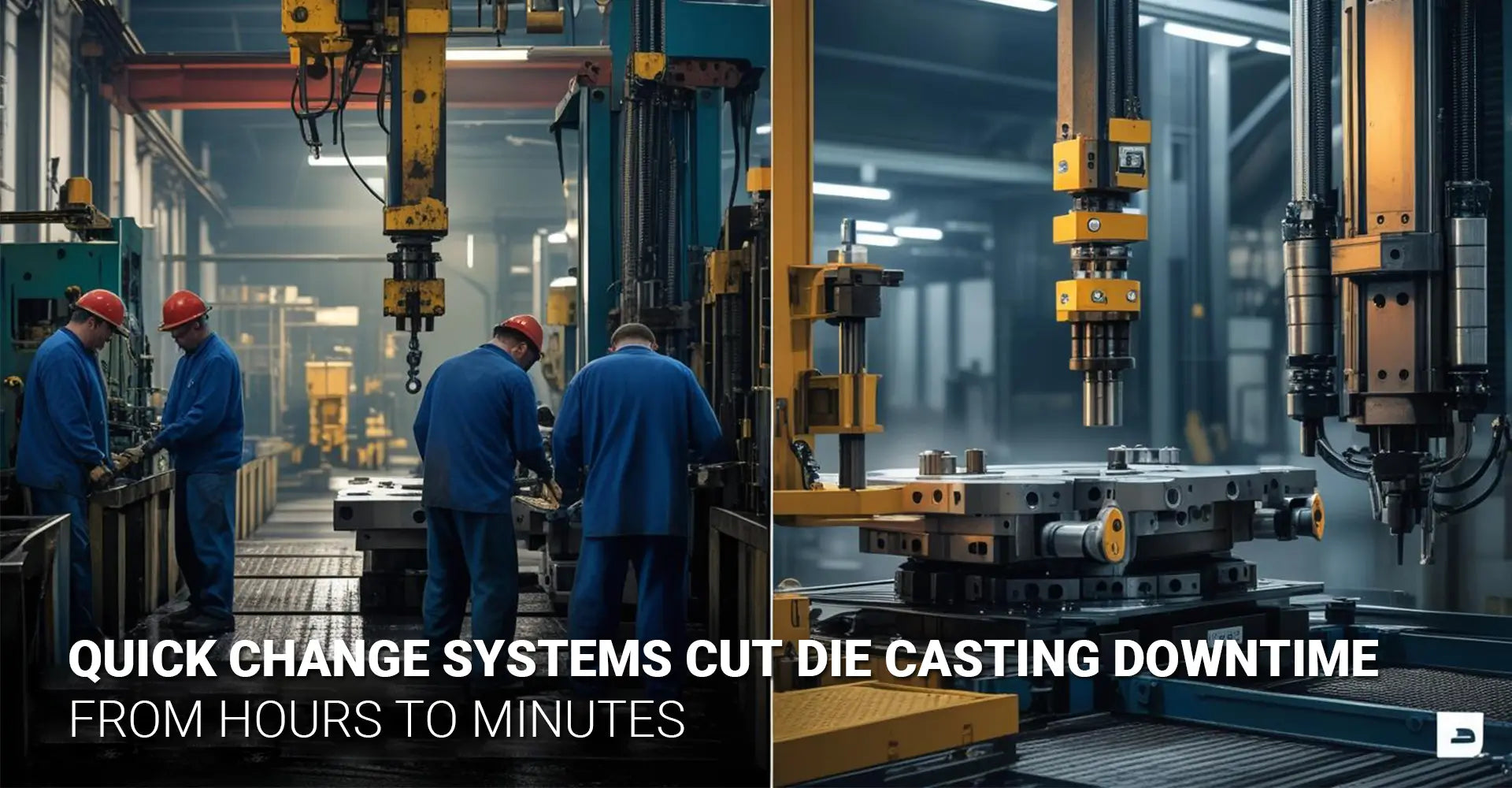
How Can Quick Change Systems Cut Die Casting Downtime from Hours to Minutes?

Die casting manufacturers lose thousands of dollars daily due to lengthy mold changeover processes. While traditional manual changeovers can take 2-4 hours, quick change systems (QMC) slash this time to just 15-20 minutes. Moreover, these systems deliver measurable ROI within 6 months through reduced downtime costs and increased production capacity.
Quick Facts:
- Time Savings: From 2+ hours to 15-20 minutes per changeover
- ROI Timeline: 6-month payback period for most installations
- OEE Boost: Up to 40% improvement in Overall Equipment Effectiveness
- Cost Impact: $80,000+ annual savings for facilities with 3+ daily changeovers
- Labor Reduction: 75% fewer man-hours required per changeover
Understanding the financial impact and technical implementation of quick mold change systems is crucial for die casting facilities facing increasing pressure to handle smaller batch sizes and faster turnarounds. Let's examine the key components and benefits that make these systems game-changers for production efficiency.
Table of Contents
- What Makes Manual Changeovers So Costly for Die Casting Operations?
- How Do Hydraulic Clamping Systems Achieve 15-Minute Changeovers?
- What's the Real ROI Timeline and How Do You Calculate It?
- How Much Can QMC Systems Boost Your OEE Performance?
What Makes Manual Changeovers So Costly for Die Casting Operations?
Traditional mold changeovers represent one of the largest hidden costs in die casting operations. Furthermore, these manual processes create bottlenecks that limit production flexibility and profitability for industrial machinery manufacturers.
Major Cost Drivers:
- Downtime Costs: $200-400 per hour of lost production
- Labor Expenses: 2-3 operators for 2-4 hours per changeover
- Safety Risks: Heavy lifting and manual bolt tightening injuries
- Inconsistent Clamping: Quality issues from uneven bolt torque
- Lost Orders: Inability to accept small-batch, high-margin work
The hidden costs extend beyond obvious downtime expenses. Additionally, manual changeovers create quality inconsistencies due to varying bolt torque applications, leading to flash, dimensional issues, and increased scrap rates. Small-batch manufacturers particularly suffer, as changeover costs often exceed profit margins on shorter production runs. Consequently, many facilities refuse profitable orders due to changeover inefficiencies. These challenges become particularly acute when producing precision components that require specific surface finishes, where consistent mold clamping is critical for quality outcomes. A die casting quick change system addresses these fundamental issues by eliminating variability in the changeover process.
How Do Hydraulic Clamping Systems Achieve 15-Minute Changeovers?
Hydraulic clamping technology replaces dozens of manual bolts with push-button operation. Subsequently, this automation eliminates the primary time-consuming element of traditional changeovers through hydraulic clamping die casting solutions.
Key Components:
- Hydraulic Clamps: 4-8 units providing 50+ tons clamping force each
- Modular Bolsters: Standardized adapter plates for offline mold preparation
- Quick Couplings: Instant hydraulic and cooling line connections
- Control System: Centralized operation with safety interlocks
- Mold Carts: Safe transport for heavy molds up to 10,000+ lbs
The system works through synchronized hydraulic pressure applied to multiple clamping points simultaneously. Meanwhile, modular die casting molds allow components to be pre-heated and prepared offline, eliminating press downtime for setup activities. Quick-connect couplings automatically align hydraulic and cooling circuits, preventing connection errors and reducing setup time. The integrated control system ensures consistent clamping pressure across all points, improving part quality while reducing operator skill requirements. This approach follows SMED die casting principles by converting internal setup activities into external ones. The implementation of automated mold handling systems further reduces manual intervention and associated safety risks during the changeover process.
What's the Real ROI Timeline and How Do You Calculate It?
Most quick mold change system die casting installations achieve full cost recovery within 6 months through quantifiable savings. However, accurate ROI calculation requires examining multiple cost factors and operational improvements.
ROI Calculation Factors:
- Downtime Reduction: 1.75+ hours saved per changeover
- Labor Savings: 75% reduction in changeover man-hours
- Increased Capacity: 15-25% more production time available
- Quality Improvement: Reduced scrap from consistent clamping
- New Order Capability: Access to small-batch, high-margin work
A typical facility performing 3 changeovers daily saves approximately $113,400 annually in downtime costs alone, assuming $200/hour machine rates. Additionally, labor cost reductions of $34,650 yearly result from requiring only one operator for 30 minutes versus three operators for 2+ hours. The total annual savings of $148,050+ typically justify system investments of $40,000-$80,000 within 6 months. Furthermore, the ability to accept previously unprofitable small-batch orders often generates additional revenue that accelerates payback timelines. This investment payback period QMC calculation becomes particularly favorable when considering the expanded capability to produce complex CNC metals and plastics components that require frequent mold changes. Comprehensive QMC ROI analysis should include both direct cost savings and revenue enhancement opportunities.
How Much Can QMC Systems Boost Your OEE Performance?
Overall Equipment Effectiveness improvements of 30-40% are common with quick change system implementation. Therefore, these systems directly impact all three OEE components through strategic efforts to reduce mold changeover time.
OEE Impact Areas:
- Availability: Reduced planned downtime from 2+ hours to 15 minutes
- Performance: Increased machine utilization for revenue-generating production
- Quality: Consistent clamping reduces defects and scrap rates
- Measurement: From 65% baseline OEE to 85-90% with QMC systems
- Competitive Advantage: Ability to handle diverse product mix efficiently
The availability component sees the most dramatic improvement, as changeover time drops from consuming 15-20% of shift time to just 2-3%. Performance gains result from increased production runs and reduced setup-related interruptions, while quality improvements stem from repeatable, consistent mold clamping forces. Facilities typically see OEE improvement die casting scores rise from industry-average 65% to 85-90% within the first year of implementation. These improvements translate directly to increased profitability through higher throughput, reduced waste, and enhanced production scheduling flexibility. The measurable gains in equipment effectiveness justify the initial investment and provide ongoing competitive advantages in the marketplace.
Conclusion
Quick change systems represent a proven solution for die casting facilities struggling with lengthy changeover times and their associated costs. The combination of hydraulic clamping technology, modular design, and automated operation delivers measurable results within months of installation.
The evidence clearly demonstrates that quick mold change systems deliver substantial returns on investment through reduced downtime, lower labor costs, and improved production flexibility. With typical payback periods under 6 months and OEE improvements exceeding 30%, these systems have become essential for competitive die casting operations. The technology's proven track record, combined with successful retrofitting capabilities, makes QMC systems a strategic investment for manufacturers seeking to improve profitability and operational efficiency. By implementing these solutions, manufacturers can transform their production capabilities and compete effectively in today's demanding marketplace.
External Links Recommendation
[Die casting quick change system][^1]
[Quick mold change system die casting][^2]
[Hydraulic clamping die casting][^3]
[OEE improvement die casting][^4]
[QMC ROI analysis][^5]
[Reduce mold changeover time][^6]
---
[^1]: Explore this link to understand the efficiency and benefits of die casting quick change systems in manufacturing.
[^2]: Learn about the mechanics and advantages of quick mold change systems in die casting for improved productivity.
[^3]: Explore this link to understand how hydraulic clamping die casting enhances precision and efficiency in manufacturing.
[^4]: Discover strategies for OEE improvement in die casting to optimize production efficiency and reduce waste.
[^5]: Exploring this resource will provide insights into how QMC ROI analysis can enhance your production processes and profitability.
[^6]: This link will offer practical strategies and techniques to minimize downtime and increase productivity in your operations.

